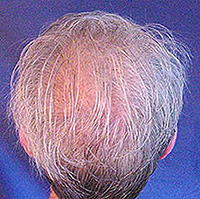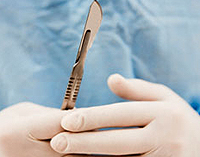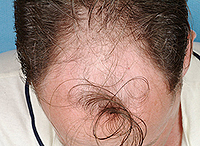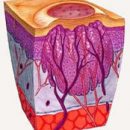Diffuse baldness is often called symptomatic. Men and women occur as a result of various reasons: high fever, bleeding, starvation, injuries, after childbirth, severe emotional stress, chronic poisoning, is observed in women who use contraceptive contraceptive means.
Content
Volos growth phases
Each follicle (hair onion) from the moment of its formation is the repetitive cycles of active growth and peace of rest:
- Anagen (Volos Growth Phase)
- Catagen (transitional phase)
- TVogen (rest phase)
Normally, the duration of anagena for each person is genetically determined and continues from 2 to 5 years. The duration of telogen is approximately 100 days. Normally, the percentage of hair in the stage of telogen, small. The average percentage ratio of hair, which is in the stage of anagena, telogen and catagena, is, respectively, 85, 14 and 1 percent. An increase in the number of telogen hair to 20 percent is an unfavorable sign.
So, hair growth occurs cyclically: behind the growth stage, or antenna, follows a short transition stage, catagen, and then - the stage of rest, or telogen, when the hair stops growing and falls out. At the end of the telogen in the follicle (hair low), the growth of the new hair begins.
Hair grows continuously, but during the day they grow faster than at night, and in the spring and autumn their growth is accelerated. Men grow faster than women. The average speed of hair growth in children - 13 mm, in adults - 15 mm and the elderly - 11 mm per month.
Telogen alopecia (diffuse baldness)
Characterized by abundant hair loss, sometimes reinforced during certain periods of the year, followed by weakening hair growth. With telogen alopecia, the hair follicle is too quickly moving from the growth stage (anagen) in the recreation stage (telogen). As a result, the daily hair losses increase significantly, and the hair may noticeably powder.
Causes of diffuse baldness
 The reasons that cause telogen alopecia can be pregnancy (ending abortion or childbirth), cancellation of oral contraceptives or a drug change, large surgical intervention, severe injury, a strict diet with rapid weight loss, severe disease (especially with high temperature), stressful situations, overwork.
The reasons that cause telogen alopecia can be pregnancy (ending abortion or childbirth), cancellation of oral contraceptives or a drug change, large surgical intervention, severe injury, a strict diet with rapid weight loss, severe disease (especially with high temperature), stressful situations, overwork.
Men and women occur as a result of various reasons: high fever, bleeding, starvation, injury, after childbirth, severe emotional stress, chronic poisoning, is observed in women who use contraceptive contraceptive means, simultaneously with a mine.
There are cases of hair loss and changes to their pigmentation from many drugs used in therapeutic practice: cytostatic, anticoagulants, boric acid, thyaretic and antimalyarial means, bismuth and others.
There are diffuse baldness due to endocrine disorders (thyrotoxicosis, hypothyroidism, pancreas, hypofunction of germ) and occurring hemodialysis in patients with chronic renal failure. With the termination of the pathological agent, the growth of hair resumes.
It should also be noted that there are physiological versions of telogen hair loss: it is a loss of hair during pregnancy and immediately after delivery; This is a breaking of hair in girls aged 16-19 years; it is hair loss in old age. However, in all these cases it is necessary to be sure that we are not dealing with the initial stage of androgenetic baldness.
Recently, it is noted that the larger the size of the baldness - the higher the probability of developing heart diseases, the Boston researchers consider. According to their data, people who have a pronounced shoulder, the risk of cardiac pathology increased by 36 percent.
Treatment of diffuse baldness
Should be pathogenetic with a certain reason for the disease. With post-infectious and postoperative alopecia - a liner therapy, arsenic preparations, vitamins (B1, B6, A and C), high-calorie food, methionine are also shown.
Local treatment is the appointment of an annoying head of the head of alcohol solutions, physiotherapeutic procedures (UFL, D'Asonval current, chloroethyl irrigation, coal-acid snow massage and T.D.). Patients suffering from hair loss should be aware that it contributes to frequent hair color and curling.
With this problem, the greatest impact on the state of hair and the scalp is provided:
- Vitamins A, E, B1, B6, with
- Magnesium microelements (Mg), aluminum (AL), silicon (Si), potassium (k), manganese (Mn), iron (Fe), zinc (zn), copper (CU).









